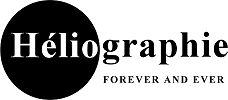Heliography Project 1827–2027
Przemek Zajfert, April 2025
Joseph Nicéphore Niépce’s heliograph from 1827 is considered the first technical image in history. A tin plate coated with asphalt emulsion, exposed for days to sunlight through a camera obscura, mechanically recorded the view from his studio window. No human line, no interpretation – light itself wrote the world onto the plate.
Two hundred years later, photography faces its dissolution. AI-generated images and digital simulations are severing the original link to the real. In a world where any image could be synthetic, the automated captures of Street View paradoxically become the last authentic photographs. Not because they were created with artistic intent, but because they arose from entirely different purposes – mapping, surveillance. Their lack of intention becomes their promise of truth.
Algorithm-driven cameras mounted on Google vehicles document the world systematically, street by street, without pause, without selection, without a conscious gaze. They produce what Roland Barthes called the studium – the purely informational, documentary layer of the photographic image. Methodically, emotionlessly, comprehensively, they record our everyday world.
And yet, this reveals the essential difference to AI-generated imagery. The punctum – that detail which pricks and wounds the viewer – can only emerge where one senses: that has been. Simulated images may inform, but they cannot hurt. They carry no trace of time, no scar of the real.
Only through my intervention – selection, framing, isolating single moments from this mechanical archive – does a specifically human punctum arise. A new division of labor emerges: the machine performs total world documentation; I become the archivist of the real, the discoverer of moments of contact hidden in the data streams of a vanishing world.
These selected digital fragments are then translated back into the material world using the technique of heliography. This return to the physical is more than a nostalgic gesture – it becomes the sealing of photographic evidence. Only in material form, subject to aging and time, can these machine-made but humanly discovered images unfold their paradoxical force: as authentic fossils of a world oscillating between total surveillance and complete blindness.
Thus, my Heliography Project gathers the last true photographs in a world after photography – traces of a reality before it vanishes fully into simulation.
